The Seven Modern Architectural Wonders Of Tokyo
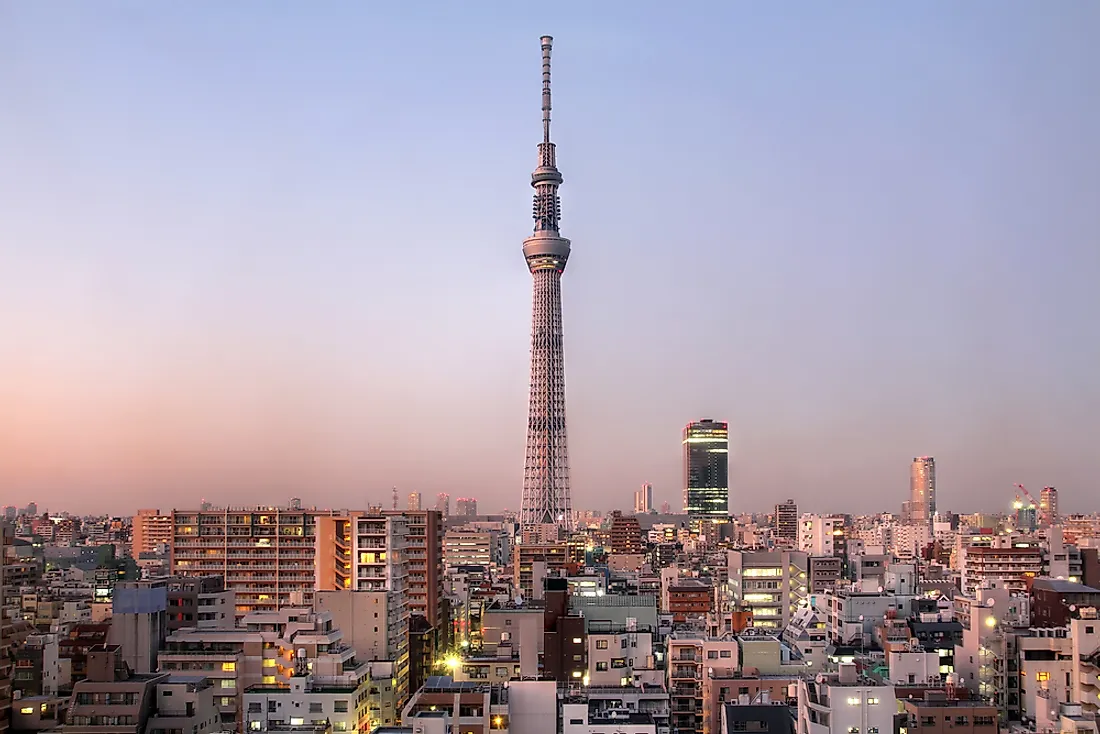
Japan is a country of numerous architectural designs, both historical and modern, which are impressive in one way or another. Japanese architecture of prehistoric time featured wooden structures with thatched roofs and burial mounds all with a tribal feel. During the beginning of the Nara Period, the Chinese Buddhist architecture heavily influenced designs which in turn took a great leap forward. Japanese architecture started showing signs of unique characteristics by the Heian Period. The architecture displayed unique carpentry techniques coupled with a sophisticated sense of aesthetics that enabled Japan to build some of the largest wooden structures in the world. The architecture style was followed by western blueprints which were introduced to Japan between the1860s and WWII period. Post-WWII, architects in Japan continued to develop sophisticated and unique designs. The city of Tokyo is no exception to the many wonders of Japanese architecture. The city has an impressive skyline with magnificent skyscrapers and uniquely designed buildings that serve as tourist attractions.
7. Tokyo Tower
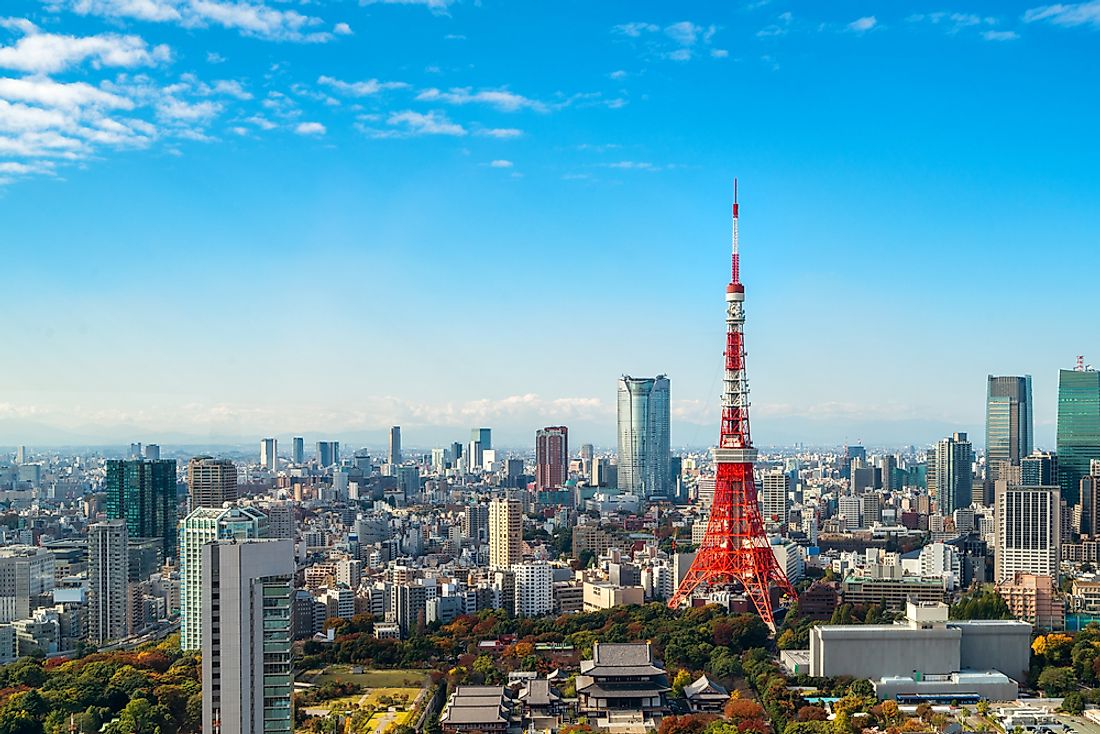
Standing at 1,092 feet above the ground is the Tokyo Tower, an observation and communications tower located in the district of Shiba-Koen, Minato in Tokyo, Japan. Tokyo Tower is Japan's second tallest structure whose design and lattice tower structure was primarily inspired by the Eiffel Tower in Paris. To comply with air safety regulations, the structure which is a few feet taller than the Eiffel Tower was painted international orange and white. The Tokyo Tower was the tallest structure in Japan from 1958 when it was officially opened and completed but it was surpassed by the Tokyo Skytree in 2012. With more than 150 million visitors, tourism is the tower's primary source of revenue followed by antenna leasing. Foot Town is a building that stands directly below the tower; it houses a variety of souvenir cafes, museum, restaurants and an indoor amusement park known as the One Piece Tower. Tokyo Tower has two observatory decks; the Special Observatory is located at the height of 819 feet while the Main Observatory is located at the height of 490 feet. More than 150 million people have visited the tower.
6. Yoyogi National Gymnasium
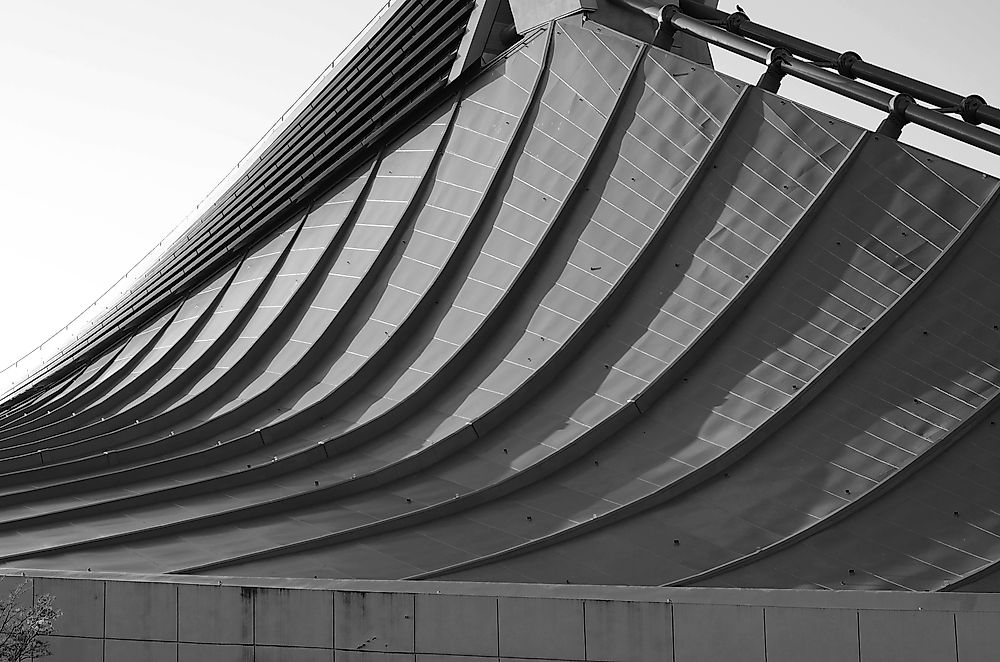
Found at the Yoyogi Park in Shibuya, Tokyo, Japan, the Yoyogi National Gymnasium is an arena most popular for its suspension roof design. Built to house diving and swimming events during the Summer Olympics of 1964, the structure was constructed between the years of 1961 and 1964. During the same games, basketball competitions were hosted at a separate annex.Kenzo Tange designed the structure, and it inspired Frei Otto to design the Olympic Stadium Arena in Munich. At present, the Yoyogi National Gymnasium is primarily used for basketball, futsal, and ice hockey - it holds about 13,291 people. During the 2020 Summer Olympics, the arena is set to host handball competitions.
5. Mode Gakuen Cocoon Tower
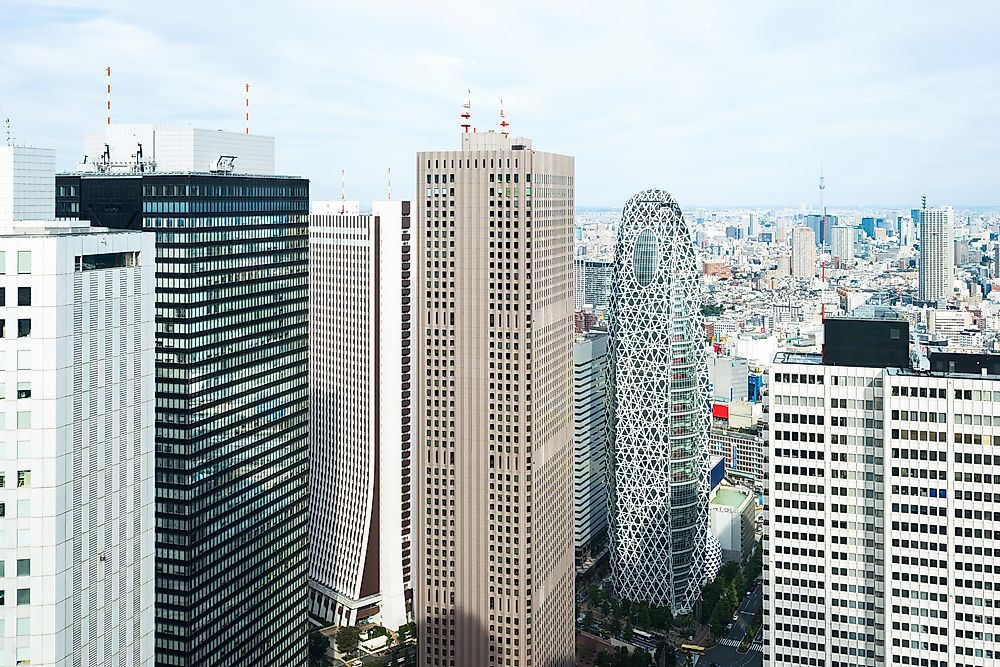
Standing in the Shinjuku district of Tokyo, Japan, the Mode Gakuen Cocoon Tower is a tall educational facility whose design features the motif of a cocoon. The structure symbolizes the facility's ability to nurture its students and send them out into the world. The 50 story structure is home to three educational institutions namely: Shuto Ikō, HAL Tokyo, and Tokyo Mode Gakuen. The tower was completed in 2008 making it the world's second tallest educational building at 669 feet. Emporis.com awarded Mode Gakuen Cocoon Tower the 2008 Skyscraper of the Year.
4. Tokyo Skytree
At 2080 feet, the Tokyo Skytree located in Sumida, Tokyo, Japan became the country's tallest structure. Tokyo Skytree is also the world's second tallest structure behind the 2,722 feet high Burj Khalifa. The tower's design was mainly inspired by the architecture of Japanese pagodas. Since pagodas are known to be resistant to earthquakes, the Tokyo Skytree was constructed with a central column from which the rest of the building hangs.
3. St Mary's Cathedral
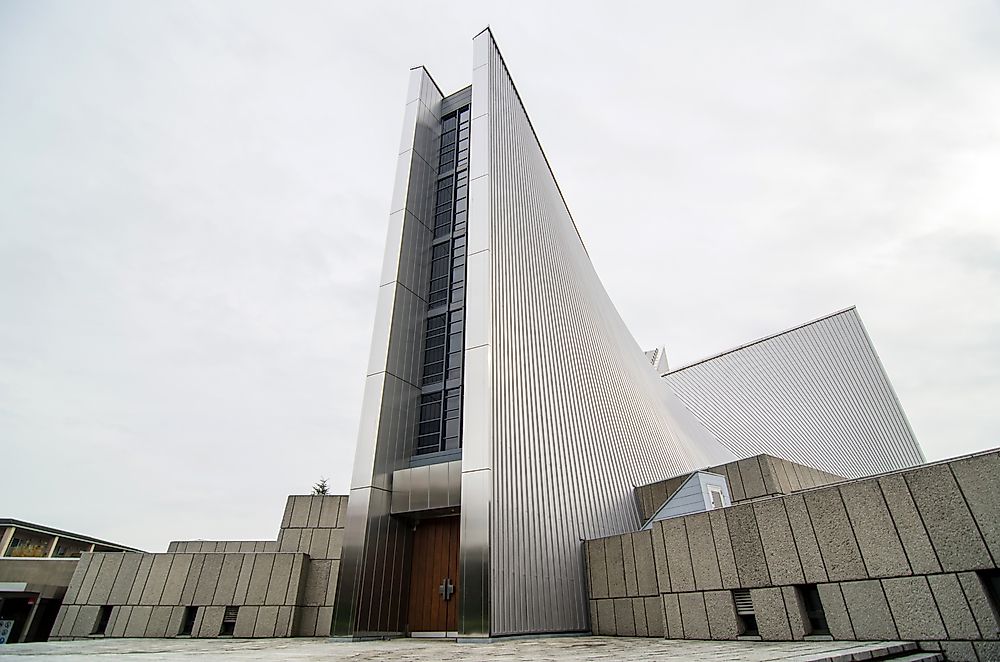
Also designed by Kenzo Tange and considered to be one of his finest works, St Mary's Cathedral is the Roman Catholic seat for the Archdiocese of Tokyo built in 1964. Initially, the wooden structure which was built in the Gothic style in 1899 was destroyed in the Second World War during the air raids on Tokyo. The St Mary's Cathedral was later renovated in 2007. The structure is a soaring vision of stainless-steel-clad abstraction and features a cross made of glass which is formed by the apex of its roof and can be seen from the air.
2. Tokyo Metropolitan Government Building
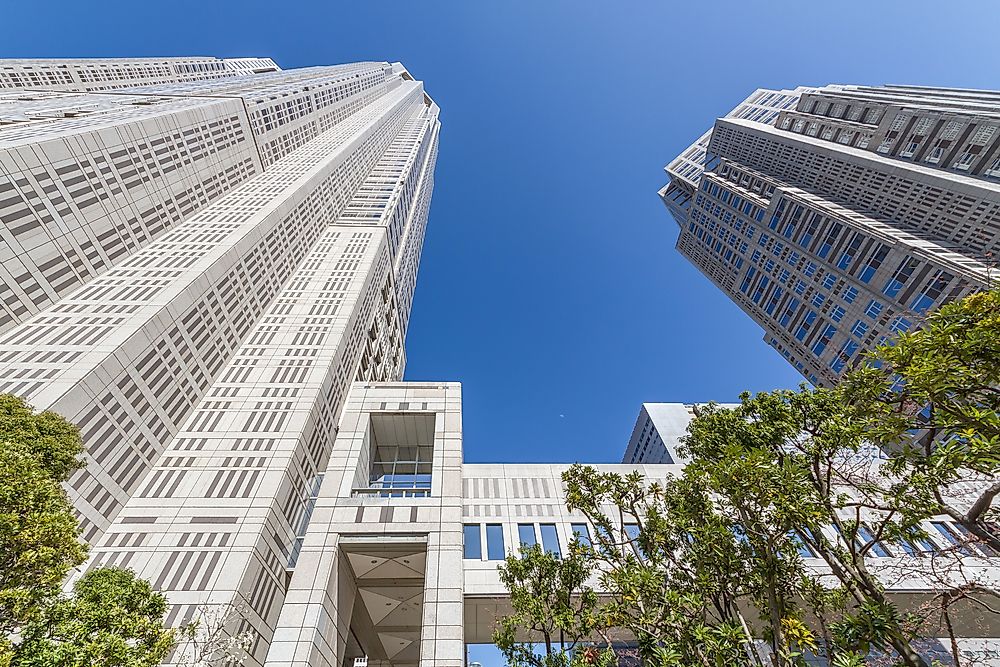
The Tokyo Metropolitan Government Building is also one of Kenzo Tange's domineering designs located in Shinjuku, Tokyo, Japan. The structure which was officially opened in 1991 is the headquarters of the Metropolitan Government of Tokyo. The design for the Tokyo Metropolitan Government Building was meant to resemble a computer chip. The building comprises of 48 floors and is approximately 797 feet high; it also features three structures with each taking up a city block. Tokyo Metropolitan Main Building No.1 is the tallest of the three structures and also the most prominent. The Tokyo Metropolitan Government Building is a popular tourist attraction mainly because of its free observation decks which provide excellent panoramic views of Tokyo and beyond. The two decks contain cafes and gift shops; they are located on the 45th floor of each tower at 663 feet high.
1. Nakagin Capsule Tower
Found in Shimbashi, Tokyo, Japan the Nakagin Capsule Tower was completed in 1972 by Kisho Kurokawa, it is an eccentric mixed-use tower for both residential and office purposes. Being an icon of the postwar Metabolist movement, the building resembles a stack of washing machines. The capsules are cramped up since they were originally designed for single businesspeople; each unit features a bed, built-in shower, phone, and TV. Initially, the idea was to properly maintain the structure but this did not happen as the capsules are in a sad state of disrepair. Only 30 of the 140 capsules are still in use as apartments while others are used as storage/office space or abandoned as of October 2012.











